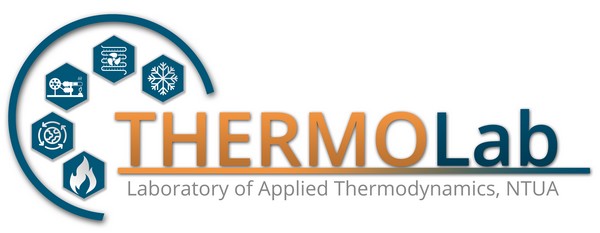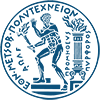The National Technical University of Athens, as the leading technological university institution in Greece, has for years been a constant driver of the development of the economy and industry of our country. The particularly important contribution of the School of Mechanical Engineering in this direction is widely recognized through the inseparable unity of studies and research it provides and which ensures the provision of high quality higher education and the promotion of science and technology. This important legacy is today the most valuable reservoir of scientific ideas and technological applications for the successful management and response to the challenges posed by globalization and the highly competitive domestic and international labor market.
In this context, the School of Mechanical Engineering is called upon to upgrade its presence and strengthen its position in the wider social and economic development with the strengthening of the connection between higher education and the labor market as a key tool. The multiple benefits of this interconnection emerge effortlessly. Primarily, the transfer of knowledge and technological/technical experience to the labor market will contribute to the creation of new jobs for scientists and to increasing the rate of development of the country, strengthening the innovation and competitiveness of Greek businesses. In addition, it will allow society to benefit more quickly and in the best possible way from the results of research and innovation carried out within NTUA. On a second level, the NTUA’s academic and research potential, through the constant fermentation and exchange of ideas with public and private bodies, with the national and international research community and with other interested bodies, will be able to capitalize on its ideas, creativity and findings of basic and applied research. Therefore, on the one hand, it will be involved in shaping developments at the domestic and international level, on the other hand, it will offer valuable training and guidance to students to use their knowledge, experience and insight to find solutions to multiple issues and finally, to join with claims in a highly competitive labor market in an environment of increasing automation and globalization. with the national and international research community but also with other stakeholders, he will be able to capitalize on his ideas, creativity and the findings of basic and applied research. Therefore, on the one hand, it will be involved in shaping developments at the domestic and international level, on the other hand, it will offer valuable training and guidance to students to use their knowledge, experience and insight to find solutions to multiple issues and finally, to join with claims in a highly competitive labor market in an environment of increasing automation and globalization. with the national and international research community but also with other stakeholders, he will be able to capitalize on his ideas, creativity and the findings of basic and applied research. Therefore, on the one hand, it will be involved in shaping developments at the domestic and international level, on the other hand, it will offer valuable training and guidance to students to use their knowledge, experience and insight to find solutions to multiple issues and finally, to join with claims in a highly competitive labor market in an environment of increasing automation and globalization. his creativity and the findings of basic and applied research. Therefore, on the one hand, it will be involved in shaping developments at the domestic and international level, on the other hand, it will offer valuable training and guidance to students to use their knowledge, experience and insight to find solutions to multiple issues and finally, to join with claims in a highly competitive labor market in an environment of increasing automation and globalization. his creativity and the findings of basic and applied research. Therefore, on the one hand, it will be involved in shaping developments at the domestic and international level, on the other hand, it will offer valuable training and guidance to students to use their knowledge, experience and insight to find solutions to multiple issues and finally, to join with claims in a highly competitive labor market in an environment of increasing automation and globalization.
In this direction and in view of the maximum benefit for the educational and research activity of the School of Mechanical Engineering, the creation of the 3D Thermal Energy Hub is proposed. It is a synergy between several Departments of the School (Heat, Fluids, Mechanical Constructions and Automatic Control, Nuclear Technology) that is expected to cover essential educational needs and provide multidimensional services to the teaching and research staff and students of the School.
Primarily, the 3D Thermal Energy Hub aims to move from academic textbook theory to practice. Students will be introduced to the practical application of design, modeling and simulation of energy and related systems. Depending on the course, they will be required to design, simulate, manufacture and optimize the performance of important equipment components found in applications related to the subject of Mechanical Engineering, such as heat exchangers, adsorbers, hydraulic elements, collectors and vanes, giving emphasis on understanding the physical phenomena and the technological requirements that govern them. Therefore,
By extension, the 3D Thermal Energy Hub will seek to bridge the gap between theory and practice by familiarizing students with the management of uncertainty inherent in the science of Applied Engineering in an environment that will reflect the reality of the Mechanical Engineering profession. Engineer. Students will understand the value of proper data collection and processing and their proper management as incorrect handling or estimations can lead to unreasonable assumptions and consequently, unreasonable conclusions. Correctly diagnosing needs, identifying and correcting errors and successfully dealing with problems are the challenges that will allow them to develop into mature Mechanical Engineers.
As a culmination of all, the 3D Thermal Energy Hub is expected to be a key pillar of enhancing interdisciplinary collaboration. Traditionally, only a few students have access to the simultaneous conduct of large experiments involving academics and researchers from related or different scientific fields and disciplines. This is usually possible in the context of participation in research programs or intra-laboratory activities. Therefore, the proposed structure, which is based on and aims to further strengthen the collaboration between the Departments of the School, is a key step in order to enable the wider majority of students to actively participate in experiments with the attendant benefits.
The idea of the implementation of the actions within the framework of the 3D Thermal Energy Hub is shown in the figure below. The purpose of the action is the maximum initiative of the students and the application of theoretical knowledge in the implementation of the prototypes, without however lacking technical support when this is deemed necessary. The students will be divided into two groups that will work in parallel in a common space. “Team 1” will be responsible for the design of the part and its members will be on the prototype manufacturing bench. This team will have direct access to the SOLIDWORKS® CAD platform on which the solid models will be developed and which will communicate with the control software of the 3D printing device. It will also have raw materials, tools and all the necessary equipment to complete the constructions. “Team 2” will be on the test bench (Energy rig), where the prototypes that have been built will be tested for their performance, their functionality and for the fidelity of their technical characteristics. Thus, this team will have access to a set of devices and equipment needed to get the prototypes up and running, such as the equipment needed to run a small cooling circuit. Since this group undertakes the experimental control of the prototypes, it will have at its disposal measuring equipment for measuring thermodynamics and other quantities, such as temperatures, supplies, etc. and even direct access this team will have access to a set of devices and equipment needed to get the prototypes up and running, such as the equipment needed to run a small cooling circuit. Since this group undertakes the experimental control of the prototypes, it will have at its disposal measuring equipment for measuring thermodynamics and other quantities, such as temperatures, supplies, etc. and even direct access this team will have access to a set of devices and equipment needed to get the prototypes up and running, such as the equipment needed to run a small cooling circuit. Since this group undertakes the experimental control of the prototypes, it will have at its disposal measuring equipment for measuring thermodynamics and other quantities, such as temperatures, supplies, etc. and even direct access
in an electronic data logging system for recording and monitoring the measurements. During the construction of the prototypes, this team will be in charge of preparing the measuring devices and equipment for the tests. Based on the test results, it is possible for the members of the second team to make suggestions for improvement to the manufacturing team (“Team 1”).
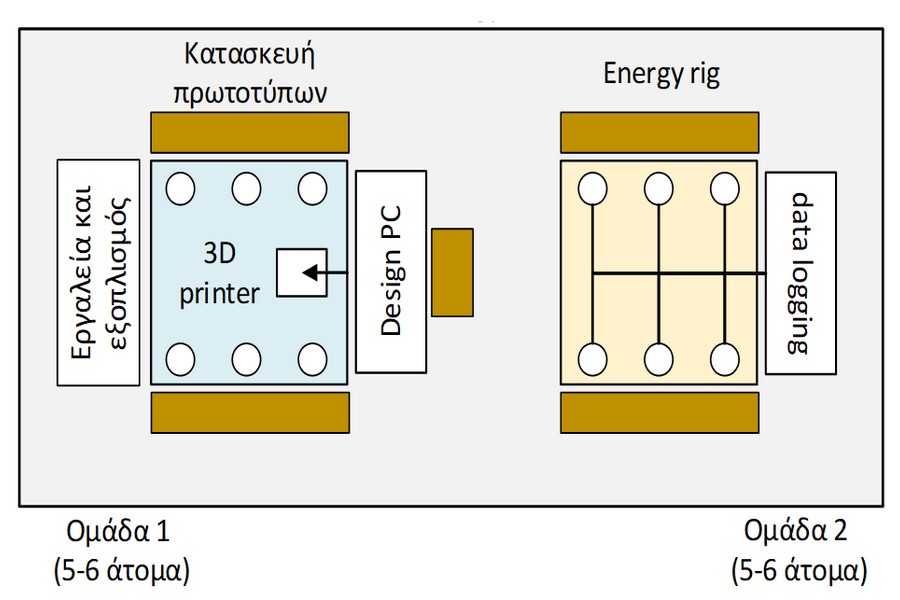
2. Equipment description
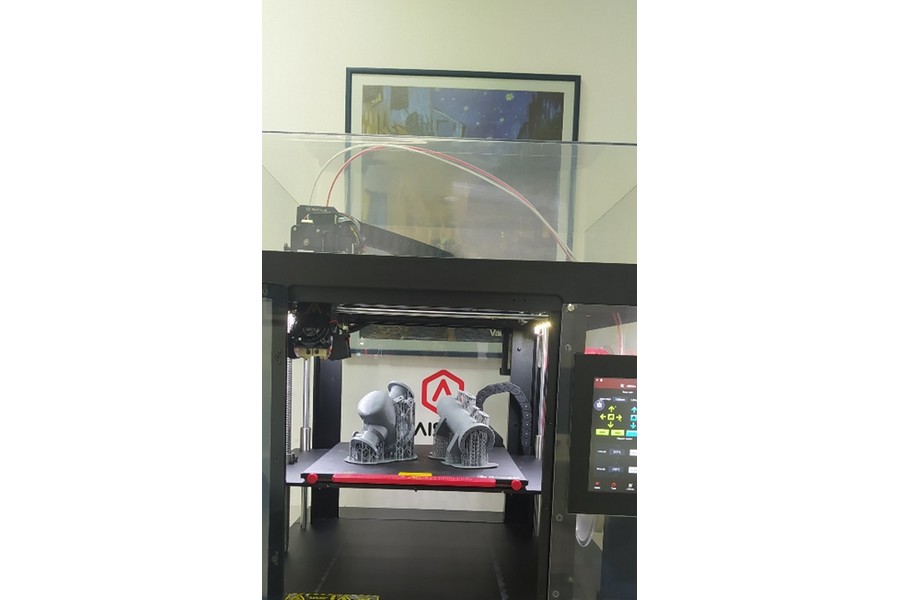
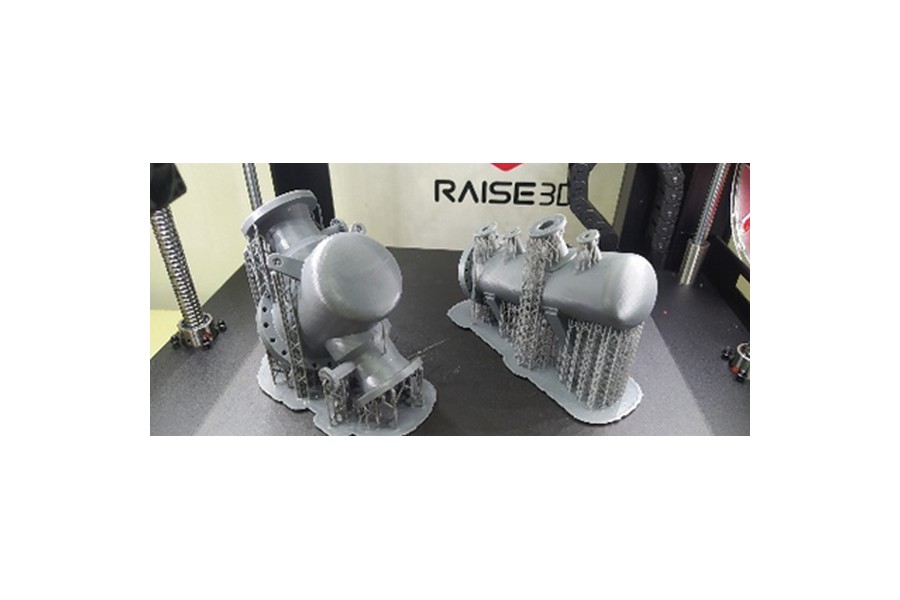
3. Courses that would be supported by the 3D Thermal Energy Hub.
- Applied Thermodynamics of Pure Substances – 2nd semester (main)
- Engine Elements I – 3rd Semester (core)
- Elements of Engines II – 4th Semester (core)
- Mechanisms and Introduction to Machine Design – 4th semester (core)
- Fluid Mechanics I – 4th Semester (core)
- Hydrodynamic Machines – 5th Semester (main)
- Thermal Energy Production in AES I – 5th Semester (main)
- Statistics and Technical Measurements – 5th Semester (core)
- Principles of Mechanical Design – 7th semester (main cycle)
- Motor Vehicle Theory – 7th semester (full cycle)
- Thermal Energy Production in AES II – 8th Semester (optional)
- Lifting, Transport and Hydraulic Systems – 8th Semester (full cycle)
- Dynamics-Vehicle Design – 8th Semester (optional)
- Industrial Refrigeration Systems – 9th semester (choice cycle)
- Anti-pollution Technology of Thermal Plants – 9th Semester (main cycle)
4. Description of how to use it
The courses supported under the development of the 3D Thermal Energy Hub are divided into groups according to the semester of teaching. The first group includes the courses of the first two years (1st – 4th semester). In these courses, students become familiar with basic concepts of thermodynamics, energy balances, basic laws of fluid mechanics and basic principles of design and calculation of mechanical constructions.
The second group includes the courses of the 5th, 6th and 7th semesters, where students become familiar with the layout of energy systems in which fluid pressure reduction processes are carried out, the principles of operation of pumps, as well as the principles of designing mechanical structures in a systematic way. This group contains lessons that will also form the basis for completing the program’s actions, such as determining measurement errors during testing.
The third group includes the courses of the last two semesters (8th and 9th) through which the students will investigate the possibility of improving the performance of integrated cooling installations, dehumidification systems, CO2 absorption devices, while also including courses related to the design of elevators and other systems and vehicles.
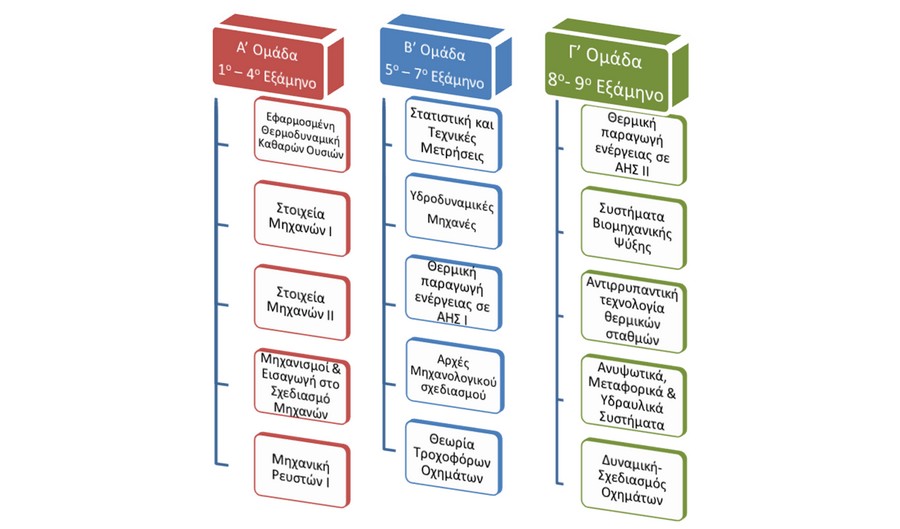
Course: Applied Thermodynamics of Pure Substances – 2nd semester (core)
Object: Familiarity with power generation and cooling systems
Target: Learning the first law of thermodynamics, thermodynamic cycles and basic concepts of thermodynamic diagrams
Procedure: Until the current academic year, students become familiar, among other things, with the laws of thermodynamics, energy analysis and balances of thermodynamic cycles with various working media, their representation in pressure-volume (pV), temperature-entropy (Ts) diagrams and the Mollier diagram. In addition, with the Laboratory conducted as part of the course, they familiarize themselves with an existing installed Stirling engine by calculating its degree of efficiency and through the construction of the energy balance of the installation.
With the 3D Thermal Energy Hub, students will be able to design, print and verify the performance of simple reciprocating engines, Stirling engines of various kinematics (thermal and cooling), axial compressors, vaporizers and steam turbines and chokes, applying the basic concepts of thermodynamics (e.g. temperature, pressure, adiabatic, isothermal, isopressure and isovolume changes, adiabatic throttling, application of the 1st thermodynamic law, etc.). In addition, students will be given the opportunity to deal with all the stages related to the construction of a mechanical product, from the conception of the idea to its dimensioning, design and implementation.
In addition, through the scanning of small-scale prototypes that the Hub will have, these systems will be able to be digitally captured with the aim of simulating their operation in appropriate software and proposing improvements and modifications which will be implemented in practice through the available 3D printers. It will also be possible to design and print efficient filler materials of original geometry for cooling towers, chillers, etc. as well as alternative atomizer and condenser geometries.
Teams: 20
People per group:10
Course: Elements of Engines I – 3rd Semester (core)
Object: Design and manufacture of static machine components (MS) used in applications including energy
Target: Training students in the calculation, design and implementation of machine components
Procedure: As part of the course, students undertake group subjects in which they prepare calculation and design studies of machine elements and small assemblies / devices. The issues so far are completed with the submission of the study which includes a complete file of construction plans, as well as an electronic file of the models and assemblies in a CAD environment. Within the framework of the 3D Thermal Energy Hub, it will be possible to design, manufacture and assemble prototypes using the infrastructure provided, so that the student groups can face all the challenges of a real construction (dimensional accuracy, assembly, construction materials, etc.). In order for the exercise to be adapted to the level of knowledge of the 3rd semester students,
Groups: 20
People per group: 10
Course: Elements of Engines II – 4th Semester (core)
Object: Design and manufacture of components and assembly of drivetrain subsystems used in applications including energy
Target: Training of students in the calculation, design and implementation of gear and other drive transmissions
Procedure: As part of the course, students take on group topics in which they prepare calculation and design studies of components and drive systems. The issues so far are completed with the submission of the study which includes a complete file of construction plans, as well as an electronic file of the models and assemblies in a CAD environment. Many times already students, using their own home 3D printing equipment, make prototypes and small assemblies of gear mechanisms and speed reducers. Within the framework of the 3D Thermal Energy Hub, the possibility of designing, manufacturing and assembling prototypes will be provided using the infrastructure provided, so that the student teams face all the challenges of a real construction (assembleability and kinematic/dynamic stability adapted to the available construction materials). The SMs and assemblies that will be designed and manufactured will concern transmissions of motion (mainly low-speed) that will contain spindles, toothed links, etc. including splines, splines and other types of transmission.
Groups: 20
People per group: 10
Course: Mechanisms and Introduction to Machine Design – 4th semester (core)
Object: Familiarity with the basic components of mechanisms used in mechanical constructions (articulated, robotic), degrees of freedom, finding kinematic / dynamic quantities (position, velocity, acceleration), Lagrange energy analysis.
Target: Learning the operation of mechanisms and their individual components used in mechanical engineering.
Procedure: Through the Hub, students will be able to implement (build) simple mechanisms used in mechanical engineering, such as 3-4 member mechanisms, piston/crank and others, taking into account the actual operating conditions of these as well as the geometrical / manufacturing limitations.
Groups: 30
People per group: 10
Course: Fluid Mechanics I – 4th Semester (core)
Object: Measurement of aerodynamic forces on objects and devices measured inside a wind tunnel
Target: Understanding and practical application of the conservation laws taught in the Fluid Mechanics I course.
Procedure: In the 4th academic semester, in the Fluid Mechanics I course, students become familiar with, among other things, the conservation laws governing fluid flows. In the context of the 3D Thermal Energy Hub, students will be able to design and print objects (3D bodies of aerodynamic and non-aerial shape such as airfoils, small fins, cylinders of various cross-sections, or body arrangements such as the piping arrangement of an exchanger) whose aerodynamic loads will be measured inside a wind tunnel. It is possible to measure the pressure and the velocity field downstream of the devices using a series of pitot tubes and to calculate the forces developed by applying the momentum theorem (which is taught and applied in practical examples in the context of the teaching board).
Groups: 20
People per group: 10
Course: Hydrodynamic Machines – 5th Semester (core)
Object: Construction of a 3D model of a hydrodynamic machine impeller/runner
Target: The implementation and control of the results of the computational work assigned to them in the context of the course.
Procedure: The students of the Hydrodynamic Machines course will prepare from the current academic year 2018-19 a group, compulsory project (3-5 people per group), the object of which is the design and drawing of the impeller/impeller and the shell of a hydrodynamic machine , which can be a pump, fan, blower, water turbine, of various types (different object each year). The machine is finally designed in CAD software (SolidWorks etc.) and delivered in electronic form.
In the 3D printer of the 3D Thermal Energy Hub, students will be able to build the 3D model of the machine they have designed and engraved with computational methods. Thus, on the one hand, they will be given the opportunity to implement the result of their work and on the other hand, they will have direct supervision of all the design details of a hydrodynamic machine.
Groups: 20
People per group: 10
Course: Thermal Energy Production in AES I – 5th Semester (core)
Object: Familiarity with the basic components of a conventional water/steam Rankine cycle: Steam generator and condenser construction
Target: Learning the conventional water/steam Rankine cycle and the individual components
Procedure: Through the 3D Thermal Energy Hub, students will be able to design, print and test the operation of a conventional water boiler. For a given thermal output, students will be asked to determine the relevant geometry of a small-scale boiler based on technical guidelines and standards. This will then be requested to be designed and printed through the Hub. The study is completed by checking the operation of the printed boiler after coupling it with a standard gas burner. Furthermore, it will be possible to design and manufacture a condenser that will be cooled by a water or air circuit.
Teams:20
People per group:10
Course: Statistics and Technical Measurements – 5th Semester, core
Object: Estimation of thermodynamic quantities and related uncertainties
Target: The measurements of quantities such as temperature, pressure and flow, with the aim of estimating quantities of thermodynamic interest, such as efficiency, heat transfer coefficients, etc., and the related uncertainties.
Procedure: In the Statistics and Technical Measurements course, students are – among other things – familiar with the concepts of statistics and the application of the laws of statistics with the aim of ascertaining changes and correlations of various quantities of engineering interest, through appropriate statistical tests. As part of the course, a series of four laboratory exercises is carried out, with the object of measuring various quantities and the appropriate statistical processing of the results of the measurements and the drawing of conclusions. These experiments are not focused on a specific type of measurement, as the goal is to become as familiar as possible with a variety of measurement techniques. With the Thermal Science 3D hub, through interdisciplinary collaboration, it will be possible to design and make measurements, experiments and laboratory exercises in more complex mechanical constructions – especially in the direction of thermodynamics and heat transfer – with the aim of determining thermodynamic quantities such as efficiency, heat transfer coefficients, etc. and the relative combined uncertainties that accompany them. Such measurements and estimates will allow the study of the effect of the various characteristics of the device and also the comparison of similar devices, while in addition it will be possible to study the correlation between various thermodynamic quantities. the heat transfer coefficients etc and the associated combined uncertainties that accompany them. Such measurements and estimates will allow the study of the effect of the various characteristics of the device and also the comparison of similar devices, while in addition it will be possible to study the correlation between various thermodynamic quantities. the heat transfer coefficients etc and the associated combined uncertainties that accompany them. Such measurements and estimates will allow the study of the effect of the various characteristics of the device and also the comparison of similar devices, while in addition it will be possible to study the correlation between various thermodynamic quantities.
For this purpose, in the context of the Statistics and Technical Measurements course, new laboratory exercises will be designed, which will be based on already existing provisions which may be supplemented, or on provisions which will be constructed entirely, using the equipment requested for supply .
Groups: 30
People per group: 5
Course: Principles of Mechanical Design – 7th semester (main cycle)
Object: Design, manufacture and assembly of components and mechanical systems
Target: Training of students in the planning and implementation of mechanical constructions and systems in a systematic way
Procedure: As part of the course, students take on group subjects in which they prepare engineering calculation and design studies in a systematic way, taking into account the needs / requirements / specifications / regulations, as well as the feedback from the application of the technology at the product level. The studies are multifactorial and synthetic, combining knowledge from all areas of mechanical engineering science, including structures, heat, fluids and control, and involve both analysis and (mainly) synthesis. The issues so far are completed with the submission of the study which includes a complete file of construction plans, as well as an electronic file of the models and assemblies in a CAD environment.
Teams: 12
People per group: 5
Course: Theory of Motor Vehicles – 7th semester (full cycle)
Object: Familiarity with the basic knowledge of calculation – design – construction of vehicle components.
Target: Learning the parameters of basic calculations – design of land vehicle components (dimensioning of car subsystems).
Procedure: In the framework of the application of the Hub, students will be given the opportunity to implement the design of vehicle components, manufacturing components of the steering system, body parts and other construction elements, taking into account the European Directives / Regulations governing the construction of vehicles.
Groups: 15
People per group: 4
Course: Thermal Energy Production in AES II – 8th Semester (optional)
Object: Familiarity with decentralized energy production systems and their components
Target: Learning the Organic Rankine Cycle and the operating principles of the individual components
Procedure: With the 3D Thermal Energy Hub, students will be able to design, print and test the operation of a plate heat exchanger. For a given heat output within an Organic Rankine Cycle, students will be asked to determine the relative plate geometry based on technical guidelines and standards. Next, the design and printing of the structural parts of the alternator will be requested through the Hub. The study is completed by checking the operation of the printed exchanger, applying preheating of the organic fluid with hot water.
As part of the course, the dimensioning of a compact water/organic fluid heat exchanger will be studied, which can be used in a small-scale Organic Rankine Cycle device, with the main objective of reducing the total volume of the device with the minimum possible pressure drop. Through the 3D printing of the exchanger, it will be possible to experimentally assess the improved performance of the system compared to the proposed methodologies for calculating the heat transfer phenomena.
Teams:8
People per group:6
Course: Lifting, Transport and Hydraulic Systems – 8th Semester (full cycle)
Object: Design and manufacture of components and assembly of positive displacement pumps and motors as well as hydraulic / pneumatic power control components used in applications including energy
Target: Training of students in the calculation, design and implementation of hydraulic / pneumatic components and machines
Procedure: As part of the course, students take on group topics in which they prepare calculation and design studies for high-pressure hydraulic systems (power hydraulics) and pneumatic systems. The issues so far are completed with the submission of the study which includes a complete file of construction plans, as well as an electronic file of the models and assemblies in a CAD environment. Within the framework of the 3D Thermal Energy Hub, it will be possible to design, manufacture and assemble prototypes using the infrastructure provided, so that the student groups can face the challenges of a real construction regarding the implementation of positive displacement pumps and engines (pistons, vanes, gear, screw, lobed, etc. ) as well as hydraulic and pneumatic power control elements (flow control valves, non-return valves, logic gates, fuses, pressure regulation valves, accumulators, pressure switches, etc.). Also in the Energy Rig measurement setup the teams will be able to experimentally evaluate the results of their work and derive performance (eg pressure – flow) curves for the machines they designed.
Teams: 12
People per group: 5
Course: Dynamics-Vehicle Design – 8th Semester (full cycle)
Object: Familiarization with the design and manufacturing technologies of vehicle components.
Target: Learning the design – calculation – manufacturing parameters of prototype vehicle components.
Procedure: In the context of the application of the Hub, students will be given the opportunity to implement the design of vehicle components, manufacturing components of the suspension system, transmission and other construction elements, taking into account the European Directives / Regulations governing the construction of vehicles. It will also be possible to manufacture standard components used by the PromRacing student team in the construction of the single-seater racing car that participates in European competitions.
Groups: 15
People per group: 4
Course: Anti-pollution Technology of Thermal Plants – 9th Semester (main cycle)
Object: Familiarity with clean combustion technologies of thermal power plants
Target: Learning the basic design parameters of a fluidized bed
Procedure: As part of the Hub application, students will be given the opportunity to familiarize themselves with fluidized bed technology. The combustion of solid fuels in a fluidized bed is a technology of particular interest from an environmental point of view. This is due to the special characteristics of its design. Combustion at a reduced temperature ensures lower NOx emissions, while the use of suitable bed material for flue gas desulphurisation within the boiler is a significant benefit in reducing anti-pollution costs.
Thus, students will be able to design and print a small recirculation fluidized bed assembly given the thermal input, which will include the main part of the riser, a particle collection cyclone, the return of solids through the cathode tube (downcomer), the L-valve or Loop seal connection, the air dispersion system and the solids filling and removal system. Furthermore, the model will include the dimensioning and design of the heat exchange surfaces in such an arrangement, while the performance of the prototype will be studied in the Energy rig.
Teams:8
People per group:5
Course: Industrial Refrigeration Systems – 9th semester (choice cycle)
Object: Familiarity with cooling systems and their subsystems.
Target: Learning the absorption cycle, fillers and principle of operation of phase change exchangers.
Procedure: With the 3D Thermal Energy Hub students will be able to design, print and test the operation of a shell/court condenser. For a given thermal power, students will be asked to dimension the active surface and volume of the heat exchanger in question based on technical instructions and standards. Next, the design and printing of the condenser will be requested through the Hub. The study is completed by checking the operation of the printed exchanger by applying water vapor condensation.
As part of the course, a circulator will be designed which will be used in a cooling device that implements a LiCl/H2O mixture absorption cycle. This particular mixture is highly corrosive, therefore through the 3D printing of the circulator the increase in corrosion resistance will be achieved. In addition, an evaporative cooler will be designed and printed which can be used for both water cooling and air dehumidification as well as filling material in a CO2 absorption device. Through the 3D Thermal Energy Hub, students will familiarize themselves with the absorption, adsorption systems, the pump/circulator separation and also with the design of the mechanical arrangements in question.
Teams:8
People per group:5
6. Response to the Strategic Objectives for Education
Regarding the objectives set by the School, they are satisfied as follows:
- Theory-practice interface (Experiential knowledge)
Through the 3D Thermal Energy Hub students will learn to understand the concepts taught in the courses and apply them to real problems. For many, it will be their first contact with the field of Mechanical Engineering. They will find in practice that the world is not as perfect as it appears from the textbook equations. They will realize how even small mistakes can either open the way to new discoveries and exits, or force them to radically reconsider their steps. They will sharpen their critical thinking and perception skills, while practicing analyzing practical problems and making decisions to solve them. At the same time they will be taught to appreciate the importance of the uncertainty within which they are called to act. This troubleshooting will often be their biggest challenge, but through this journey we will see mature Mechanical Engineers develop, ready to successfully meet the challenges of their profession. With the 3D Thermal Energy Hub, the concepts discussed in the classroom will be applied outside of it for the majority of our students. Students will realize the importance of carefully processing the data of the problems and making correct assumptions needed to solve them. for the majority of our students. Students will realize the importance of carefully processing the data of the problems and making correct assumptions needed to solve them. for the majority of our students. Students will realize the importance of carefully processing the data of the problems and making correct assumptions needed to solve them.
- Strengthening the cooperation of Faculty Members of different academic subjects
The 3D Thermal Energy Hub creates a synergy between four of the six Sections of the Faculty of Mechanical Engineering, between the lecture hall and the Hub and enhances interdisciplinary collaboration by covering almost 25% of the undergraduate courses offered by the Faculty in the trunk.
- Strengthening cooperation of students of different semesters
Collaborating Faculty Members participating in the 3D Thermal Energy Hub will agree with each other to form student groups that will include students of older and younger semesters so that there is a smooth transfer of know-how between them.
